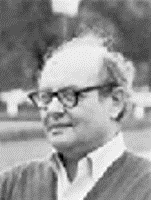Sol LeWitt, American artist, dies at 78

Sol LeWitt, a humble artist known for dynamic wall paintings and a founder of minimal and conceptual art styles, has died in New York, according to published reports.
The 78-year-old artist, who was born in Hartford and lived for the last two decades in Chester, Connecticut, died Sunday from complications from cancer, The New York Times and The Hartford Courant reported Monday.
He lived for much of the 1980s in Spoleto, Italy, before returning to Connecticut in the late 1980s.
"It is not an overstatement to say that he was one of the most influential American artists of the 20th century," Joanna Marsh, curator of contemporary art at the Wadsworth Atheneum in Hartford, told The Associated Press on Monday. "His work has had a profound influence on future generations of artists and will continue to have an impact."
LeWitt preferred to let his work speak for itself and frequently avoided media attention.
"He never felt that art has to do with the personality of the person who made it," Andrea Miller-Keller, a former Hartford curator and longtime friend, told The Courant. "It's not about the star power but about the art."
Much of his art was based on variations of spheres, triangles and other basic geometric shapes. His sculptures commonly were based on cubes using precise, measured formats and carefully developed variations.
By the mid-1960s, LeWitt had begun to experiment with wall drawings. The idea was considered radical, in part because he knew they would eventually be painted over and destroyed.
LeWitt believed that the idea of his work superseded the art itself, Miller-Keller said. "The essence of LeWitt's work is the original idea as formulated in the artist's mind."
LeWitt's first wall drawing, part of a 1968 display in New York, was so striking that the gallery owner could not bear to paint over it. She insisted the LeWitt come and do it himself, which he did without hesitation.
Born Sept. 9, 1928 to Russian immigrants in Hartford, LeWitt was raised by his mother and an aunt following the death of his father with LeWitt was 6.
He completed a traditional art program at Syracuse University in 1949, saying that he studied art because he "didn't know what else to do," he told a reporter years later. "It was something I knew I liked."
LeWitt was in the U.S. Army for two years during the Korean War, serving in non-combat positions in California, Japan and Korea.
In 1953 he moved to New York and held a variety of short-term jobs, including working as a night receptionist at the Museum of Modern Art. His first solo art show was at the John Daniels Gallery in New York in 1965 and he taught at several New York art schools.
He is survived by a wife, Carol, and two daughters. Funeral services will be private.
Subscribe to Pravda.Ru Telegram channel, Facebook, RSS!





